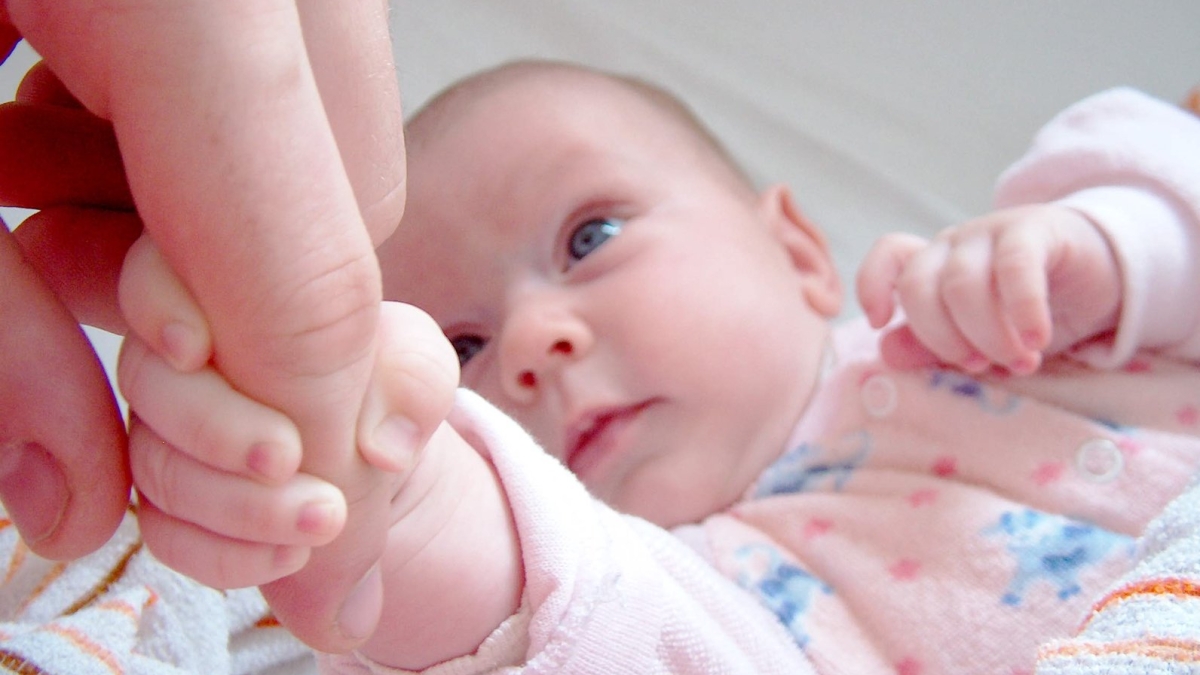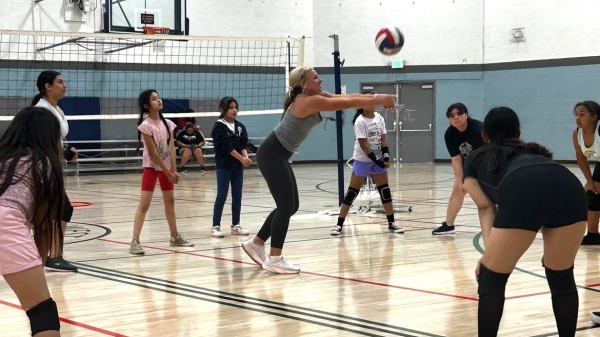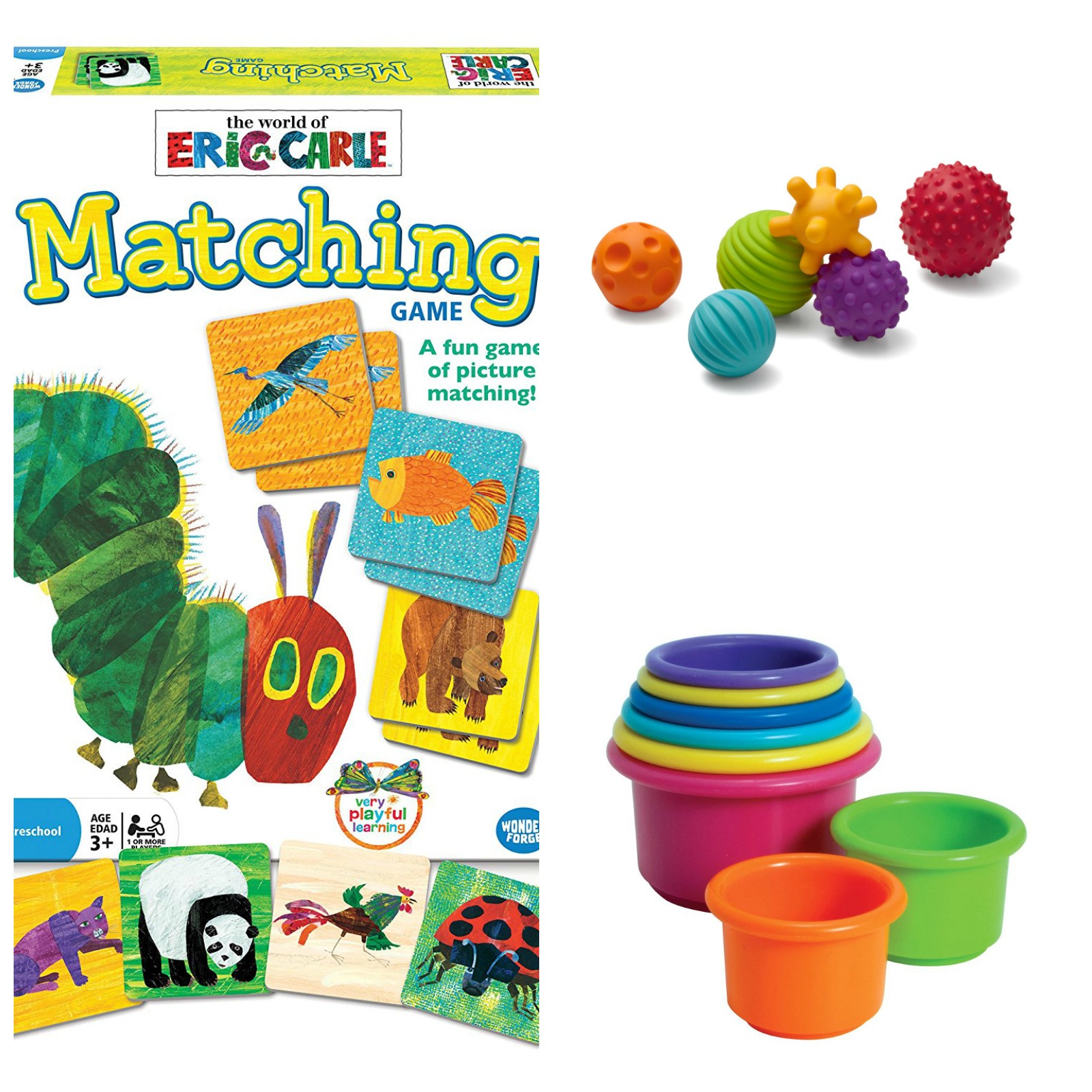ASU grad student's project strengthens bond between baby, parent
Toddler & Infant Parent Kit, which uses attachment-theory concepts, wins $10,000 prize in Halle Foundation contest

Rolling a ball to a baby can be adorable fun, but it’s also a way to build a crucial bond that can affect the child’s emotional growth.
Play is an important part of creating an emotional bond between a baby and a parent or caregiver, and an Arizona State University graduate student has created a kit of items to foster that connection, based on the concepts of attachment theory.
Eric Henley won $10,000 for his “Toddler & Infant Parent Kit” submission to the Infant Development Prize contest sponsored by the Diane & Bruce Halle Foundation. The contest, held last month, featured five finalist teams, and another ASU team came in second. Henley is studying marriage and family therapy in the T. Denny Sanford School of Social and Family Dynamics at ASU.
The contest required the entrants to create a development kit suitable for children from birth to 36 months that cost $125 or less, including the container. Henley perused Amazon to select the items he thought would make parent-baby interaction fun and effective. When he became a finalist, he gathered the items together, put them into a clear plastic bin and shipped them to the foundation.
Henley’s project was driven by attachment theory, a psychological model that addresses how babies respond to the presence, or lack of, caregiver attention.
“So when I was choosing books, I wanted to make sure I was helping with the linguistic development but also that attachment between the parent and child,” he said. “What we notice in the clinical setting is when you’re angry, there are a lot of feelings underneath that — it might be fear, it might be anxiety, it might be disappointment.
“So I chose books that had to do with feelings and emotions at that level,” he said, so parents could build a lifelong relationship that’s open to talking about feelings.
At the presentationThe second-place team consisted of family and human development doctoral students Bobbi Bromich and Kenton Woods, also in the T. Denny Sanford School of Social and Family Dynamics., Henley showed a video clip of how the lack of response from a parent triggers an emotional meltdown by a baby, and he explained how prolonged emotional disconnection can trigger a “distress response” pattern that can continue throughout life. Babies are dependent on that positive interaction, and deprivation can activate the same part of the brain that registers physical pain.
Play is one way to strengthen that bond. So Henley’s infant-development kit included stacking cups, balls, puzzles, books, coloring books and an interactive stuffed animal. The items addressed four development areas: social and emotional, language and communication, cognitive thinking and problem solving, and movement and physical activity.
He also created a research-based resource guide with information about expected behaviors at different age levels and a milestone checklist.
Henley drew inspiration from his own fatherhood and told the judges that he wished he'd had the kind of information he had now so he could have acted more intentionally.
“I definitely have all those memories to look back on,” he said.
Here are some items in Henley’s prize-winning infant development kit and the ways parents or caregivers can use them to help babies and toddlers:
Items in Eric Henley's "Toddler & Infant Parent Kit" include (from left): Eric Carle Matching Game by Wonder Forge, $9.62; Infantino Textured Multi Ball Set by Infantino, $7.96; and The First Years Stacking Up Cups by The First Years, $3.99. All items available at Amazon.com.
If your child is 2 months old: Hold one of the cups above your baby’s head and encourage her or him to reach for it.
If your child is 4 months old: Provide safe opportunities for your baby to reach for the balls by placing them at various distances from your baby.
If your child is 6 months old: When he drops a cup on the floor, pick it up and give it back. This game helps him learn cause and effect.
If your child is 9 months old: Hide the cards under objects and have your child find them.
If your child is 2 years old: Kick a ball back and forth with your child. When your child is good at that, encourage her to run and kick.
Books in the kit include (from left): "The Way I Feel" by Janan Cain, $9.27, "The Way I Act" by Steve Metzger and Janan Cain, $8.60, both published by Parenting Press; and "Happy Hippo, Angry Duck: A Book of Moods (Boynton on Board)" by Sandra Boynton, $3.45, published by Little Simon. All are available at Amazon.com.
If your child is 6 months old: Repeat your child’s sounds and say simple words with those sounds. For example, if your child says “bah,” say “bottle” or “book.”
If your child is 18 months old: Describe your child’s emotions. For example, say, “You are happy when we read this book.”
If your child is 2 years old: Do not correct your child when he says words incorrectly. Rather, say it correctly. For example, “That is a ball.”
If your child is 3 years old: Talk about your child’s emotions and your own. For example, say, “I can tell you feel mad because you threw the puzzle piece.” Encourage your child to identify feelings in books.
Items in the "Toddler & Infant Parent Kit" include "Alex Toys Little Hands Learn to Dress Monkey," $20.59, and "Alex Toys Little Hands First Scribble" coloring book, $11. Both are available at Amazon.com.
If your child is 1 year old: Ask your child to label body parts on the monkey.
If your child is 2 years old: Ask your child to help with the zipper, buttons, snaps and ties.
If your child is 3 years old: Give your child paper, crayons and coloring books. Color and draw lines and shapes with your child. My First Scribble has excellent ideas to get you started.
Top photo courtesy of freeimages.com.
More Arts, humanities and education

ASU Gammage program brings the arts to incarcerated women
Laughter might not be the first thing you expect to hear when arriving at Maricopa County Estrella Jail, the all-women prison facility in south Phoenix. But it was there on a recent afternoon, down…

Maryvale girls gain confidence through volleyball program
Life as a teen or tween can be tough, particularly for girls. That's why an Arizona State University partnership with a community center in West Phoenix is building confidence in girls through…

ASU double major plans to use Japanese studies in her business career
Editor’s note: This story is part of a series of profiles of notable spring 2024 graduates. Racine Merritt is a business-minded, ambitious go-getter through and through, beginning with earning two…



